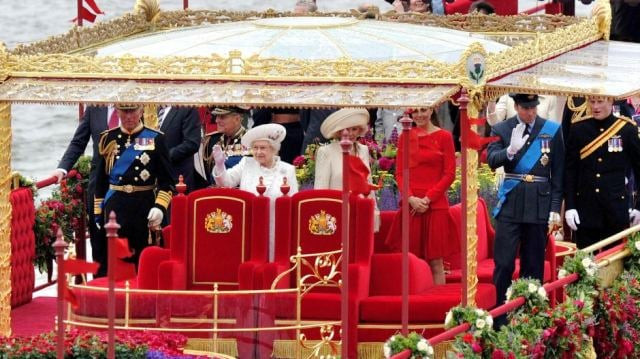Elizabeth's jubilee contrasts with Victoria's empire fest
Generosity, however, had its limits; Queen Elizabeth will welcome 10,000 subjects drawn from a lottery for a picnic.

Elizabeth's jubilee contrasts with Victoria's empire fest
In 1897, Joseph Chamberlain, the secretary of state for the colonies, convinced Victoria to kill two birds with one stone: mark the 60th year of her reign but also celebrate the British Empire "at its zenith", said the historian Walter Arnstein.
At the time, Victoria reigned over a quarter of the world's population, recalled royal expert Kate Williams.
For her diamond jubilee -- celebrated on a single day rather than the four-day public holiday weekend this time -- the empire came to London.
Chamberlain "invited 11 colonial ministers of the self-governing colonies to be present, along with some Indian princes, and representative colonial military detachments to be part of the jubilee procession", Arnstein told AFP.
Indian lancers wearing turbans, mounted troops from New Zealand, Jamaican gunners, and even camels paraded in front of Buckingham Palace on June 22, 1897, which was declared a public holiday.
An impressive display was captured in grainy footage on short black-and-white films.
More than a century later for Queen Elizabeth II's diamond jubilee, there is no equivalent participation from the Commonwealth or its 15 other realms where she is the head of state.
"The empire has changed in her lifetime. It disintegrated," said Williams, the author of "Young Elizabeth: The Making of our Queen".
This diamond jubilee "is much more a celebration of British history. It's much more a celebration of her reign and the British royal family".
In 1897, the jubilee was also celebrated with splendour across the empire, where sumptuous events were organised.
Town clocks honouring the queen were erected in Malaya and New Zealand, and fountains inaugurated in Seychelles.
Though Queen Elizabeth is the head of the Commonwealth, there is little of note taking place over the jubilee weekend in the other 53 member states, with the exception of Canada, visited by Prince William and his wife Catherine, and his father Prince Charles and his wife Camilla, in the last 12 months.
Sunday's diamond jubilee pageant on the River Thames, the biggest spectacle of the weekend's events, was not transmitted live by the Australian Broadcasting Corporation on its main free-to-air channel. It scheduled the 1975 film "Shampoo" instead.
At the end of the 19th century, the idea of organising public festivities was still a relatively new concept in Britain, said Arnstein.
On June 22, 1897, the queen went through London in a carriage procession, as her great-great-grand-daughter will do on Tuesday.
From Saint Paul's Cathedral to Buckingham Palace, hundreds of thousands of people, including the US writer Mark Twain, thronged the streets to cheer Victoria.
She recorded the occasion in her journal.
"No-one ever, I believe, has met with such an ovation as was given to me, passing through those six miles of streets... The crowds were quite indescribable and their enthusiasm truly marvelous and deeply touching," the empress wrote.
At the time, Victoria, aged 78 and suffering from arthritis and rheumatism, took part in the service at St Paul's from her carriage.
It was held outside as she could not walk up the cathedral steps.
The scene elicited sarcasm abroad.
"The Europeans were like: look at that queen. They've got to have the celebration in the street in Britain!" said Williams.
Similar jubilant scenes met Elizabeth as she led Sunday's spectacular 1,000-boat flotilla with around 1.2 million braving the rain to show their support.
The eyes of the fashion world were on the queen's silver and white outfit, a far cry from Victoria's day.
Despite the celebrations, Victoria refused to change her black mourning clothes, worn since the death of her beloved husband Prince Albert in 1861.
In vain, "ministers begged her to wear a kind of golden robe to go to the ceremonies", Williams said.
Instead, she wore a black silk outfit, topped off with a headdress decorated with ostrich feathers.
In 1897, organised by Victoria's daughter-in-law princess Alexandra, street feasts were laid on for 400,000 of London's poorest residents.
But the palace's generosity had its limits: it only saw the light of day thanks to the funds of tea magnate Thomas Lipton.
On Monday, Queen Elizabeth will welcome 10,000 subjects drawn from a lottery for a picnic at Buckingham Palace, paid for from the royal coffers.



















COMMENTS
Comments are moderated and generally will be posted if they are on-topic and not abusive.
For more information, please see our Comments FAQ